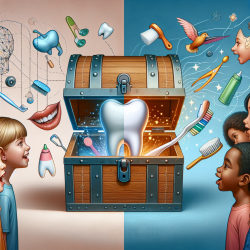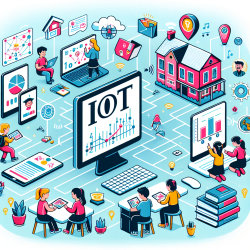Introduction
Air pollution is an insidious global health crisis, contributing to over 5 million premature deaths annually. The impact of air pollution is profound, affecting vulnerable populations such as children, women, and those living in poverty the most. As practitioners in the field of speech-language pathology, understanding the implications of air pollution on child development is crucial. This blog post aims to highlight the key findings from the research article "Air Pollution and Health – A Science-Policy Initiative" and encourage practitioners to integrate these insights into their practice.
The Impact of Air Pollution on Child Development
Air pollution affects individuals from the earliest stages of development, with children being particularly vulnerable. The research highlights several adverse health outcomes linked to air pollution:
- Respiratory issues such as pneumonia, bronchitis, and asthma.
- Impaired lung growth and development in children and adolescents.
- Increased risk of cardiovascular diseases, including heart disease and stroke.
- Potential contribution to cognitive impairments and developmental delays.
These health challenges underscore the need for speech-language pathologists to consider environmental factors when assessing and treating children. The effects of air pollution on cognitive and linguistic development can manifest as language delays, learning difficulties, and other communication disorders.
Integrating Research into Practice
Practitioners can enhance their skills by incorporating the findings from this research into their practice. Here are some actionable steps:
- Environmental Assessments: Incorporate questions about environmental exposure in case histories and assessments to better understand potential contributing factors to a child's developmental challenges.
- Advocacy and Education: Educate families about the risks of air pollution and advocate for cleaner environments. Encourage parents to reduce exposure by using air purifiers and avoiding outdoor activities during high pollution periods.
- Collaborative Efforts: Work with other healthcare professionals and community organizations to address environmental health issues. Collaborate on initiatives aimed at reducing air pollution exposure in schools and communities.
- Continuous Learning: Stay informed about the latest research on air pollution and its effects on health. Engage in professional development opportunities to enhance your understanding and skills.
Encouraging Further Research
While existing research provides valuable insights, there is a need for further studies to explore the specific impacts of air pollution on speech and language development. Practitioners are encouraged to contribute to this growing body of knowledge by participating in research initiatives and collaborating with academic institutions.
Conclusion
Air pollution is a significant public health concern with far-reaching implications for child development. By integrating research findings into practice and advocating for cleaner environments, speech-language pathologists can play a vital role in mitigating the impact of air pollution on children's health. For those interested in delving deeper into this topic, I highly recommend reading the original research paper, Air Pollution and Health – A Science-Policy Initiative.










